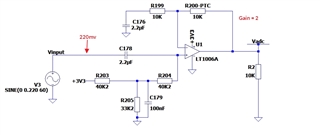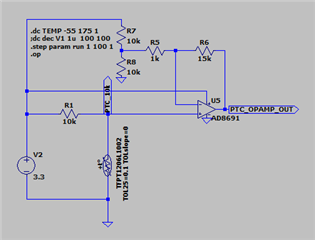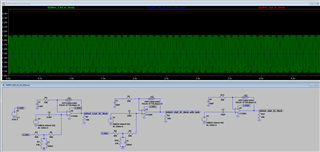In the circuit in the figure below, we want to compensate the voltage gain according to the temperature variation. Since the input circuit (the V3 source) causes the output voltage to decrease with temperature variation, the idea is to use the PTC to increase the gain as the temperature rises.
Our doubt is that at the point where we installed the PTC TMP61-Q1, (R200-PTC) in the drawing, although the opamp is DC only, the PTC suffers an "AC" maximum current of about +/-80µA. Could this be a problem?
Thank you in advance for your reply.
Thanks; Mauricio.
mauricio.correa@lupatecnologia.com.br







